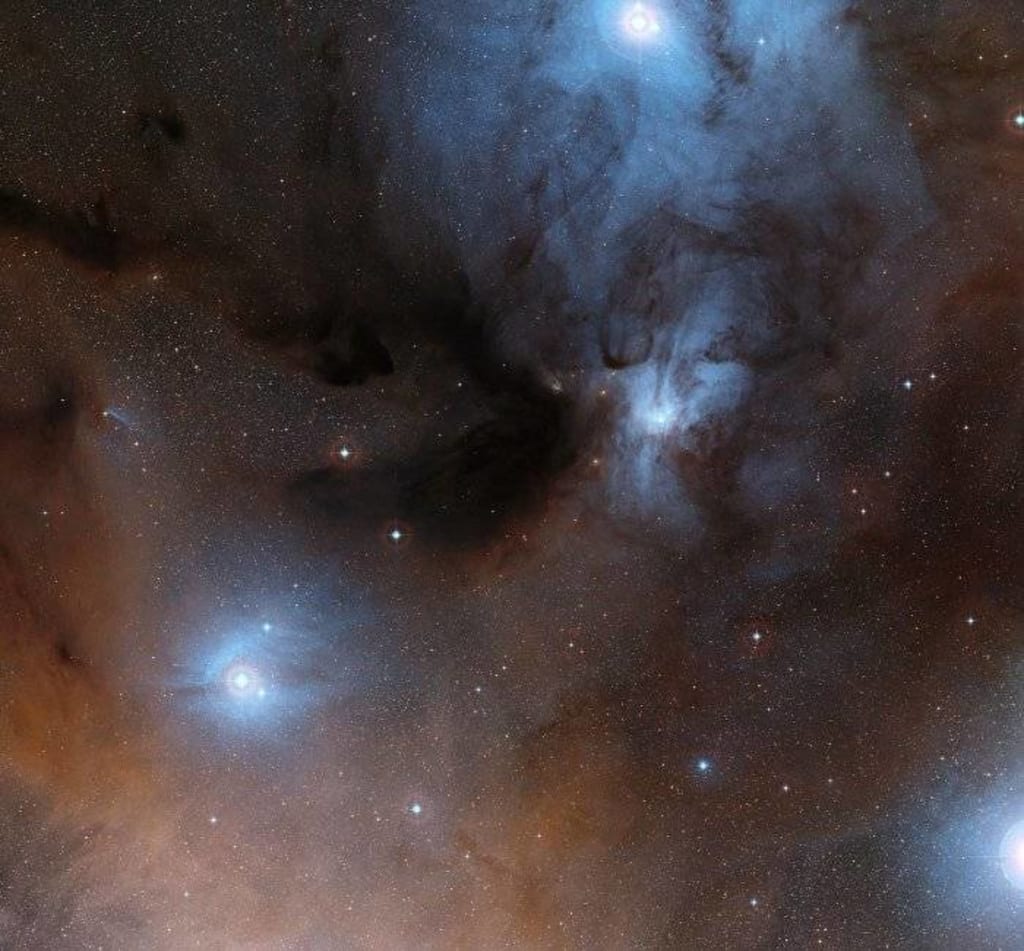cause of planet formation
Its formation process is...

When a star is born, a dense cloud of interstellar material collapses under its gravity, spinning into a flattened disk that eventually rolls up into a baby star. Now, for the first time, hints of planet formation have been discovered around such a young protostar, to which remnant clouds of dust and gas are still collapsing and the disk is still forming.
This is the first such structure to be found in a protostellar ring, and it suggests that planets formed earlier than we thought, even before the nascent system was half a million years old.
The young protostar, dubbed IRS 63, is located 470 light-years away in the Ophiuchus star-forming region -- a stellar nursery where dust is thick enough to form the spinning clumps that eventually become stars.
The Ophiuchus nebula complex IRS 63 is a first-class star in the star formation process and is less than 500,000 years old. It has completed its main accretion phase and has most of its ultimate mass; the millimeter wavelength makes it dazzling, and it is one of the brightest protostars of its kind.
In addition, IRS 63 has a large disk that can extend to about 50 AU. These properties, combined with its accessibility, make the object an excellent target for studying star and planet formation.
A team led by astronomer Dominique Segura-Cox of the Max Planck Institute for Extraterrestrial Physics in Germany used the Atacama Large Millimeter/submillimeter Array in Chile— This radio telescope is excellent at detecting early planet formation — taking a close look at the star and the dust cloud around it.
There, in the swirling disk, the team found a surprise: two dark, concentric voids centered on the protostar -- which astronomers believe is a sign of planet formation.
Planet formation is a little-known process. The most popular model is core accretion—the gradual accumulation of dust particles in a disk, first sticking together electrostatically and then gravitationally as they grow. When this happens, the protoplanet rolls up all the material along its orbit, creating voids in the annular disk.
This gap was detected in almost all discs we shot at high enough resolution. But there's a big problem with this model -- it takes a long time for planets to form this way, and protostellar disks older than a million years or so don't seem to have enough material to form known populations of exoplanets.
Astronomers have discovered more than 35 secondary protostar systems around 1 million years old that have lost large areas of their dust clouds but still have protostellar disks and gaps where activity is evident. The fact that they create such well-developed gaps within a million years of their formation suggests that planet formation was well u at this age of the star. underway
If the structures detected by Dominique Segura-Cox and her team were created by planets, the results would support this idea and provide evidence for the loss of mass from protostellar disks The problem provides a solution.
"Recent dust mass measurements of secondary disks also suggest that, on timescales from less than 0.1 to 1 million years, if extremely large masses are locked in planetary bodies, such This phenomenon explains the dust depletion we observed."
Compared to the voids in these secondary disks, the contrast in the voids in the disks around IRS 63 is lower, suggesting that they contain more material. Therefore, the protoplanet inferred from the above-mentioned gap is in an earlier developmental stage.
The team also calculated the mass of potential protoplanets needed to create the gaps they saw. The closer gap, 19 AU from the star, should have been created by an object 0.47 times the mass of Jupiter. The farther gap, 37 AU from the star, was created by an object 0.31 times the mass of Jupiter.
This mass is the upper limit of the estimate, but even a slightly lower estimate is already a very large celestial body - after all, the mass of Earth is only 0.003 times that of Jupiter. This is surprising, given that such a rapid accretion process faces enormous obstacles in our planetary model.
An alternative explanation, the researchers noted, is that planets have not yet begun to form. Instead, the voids may be caused by a phenomenon known as radial drift: The gas in the disk creates drag, causing dust and rock grains to lose angular momentum and begin drifting toward the star. This is considered a hindrance to planet formation because planets form faster than radial drift.
But the density of the gas is not necessarily uniform, and local maxima in the radial surface density of the gas can form "traps" of dust. So t caused o inward-moving dust, the denser rings in the disk are traps for these gas pressure maxima. T voids may befbee
According to this interpretation, these thick, dusty rings would generate a higher dust-to-gas ratio, leading to accelerated accretion zone formation—so, they're more of a protoplanetary prototype.
Whatever the explanation, what the team observed in the disk around IRS 63 is likely the result of planet formation -- a process that started much earlier than we've seen before.
Artistic rendering of a protoplanetary disk surrounding a forming baby star
In their paper, the researchers wrote: "Even under the most conservative scenario...these features suggest that dust begins to accumulate at a specific radius of the disk. The structure of the disk likely has an impact on planetary evolution early in the star formation process. ."
"First-class protostars are still encased in large areas of gas and dust that can replenish the disk as material accretions, suggesting that if planet formation in IRS 63's disk has begun, then planets and protostars are likely to have grown and evolved together since the early days."
About the Creator
sayre laylah
Tired of monotonous climbing moves, but every step is close to the top
Enjoyed the story? Support the Creator.
Subscribe for free to receive all their stories in your feed. You could also pledge your support or give them a one-off tip, letting them know you appreciate their work.






Comments
There are no comments for this story
Be the first to respond and start the conversation.